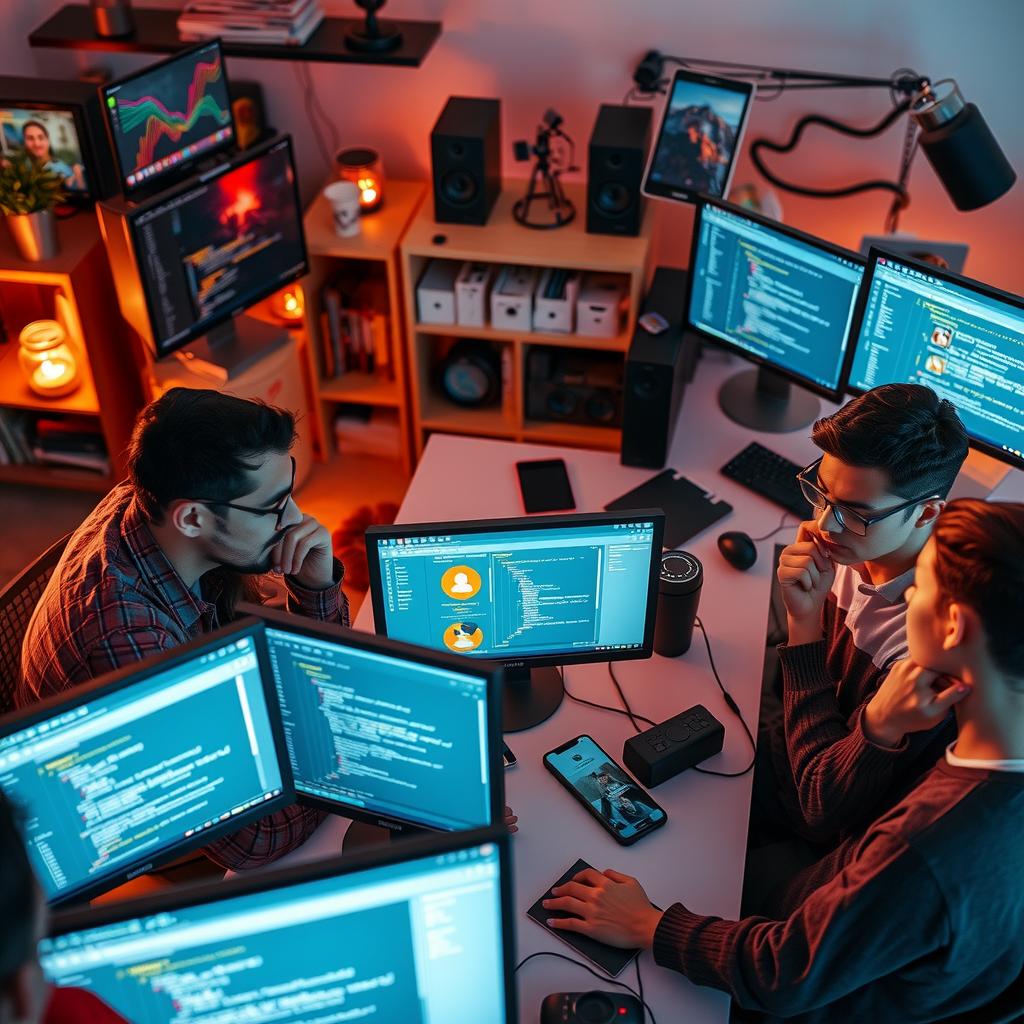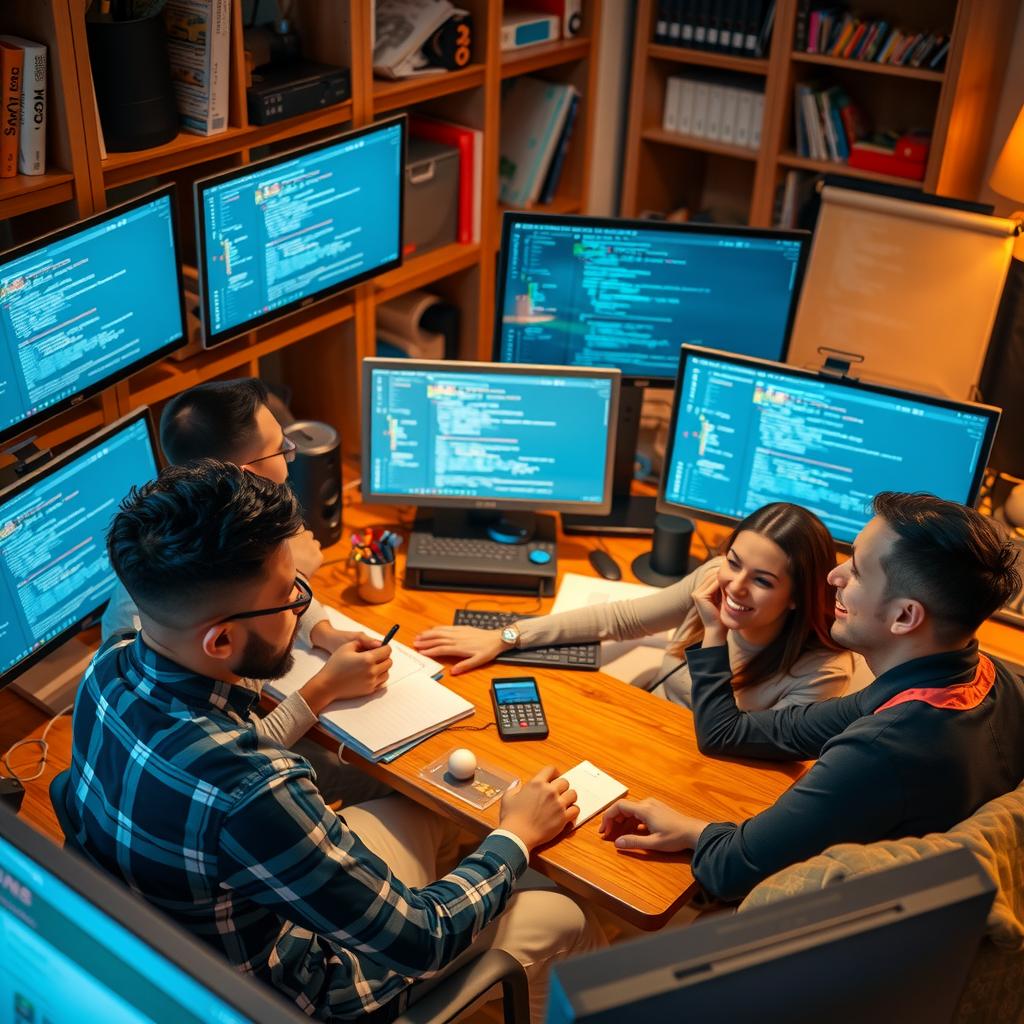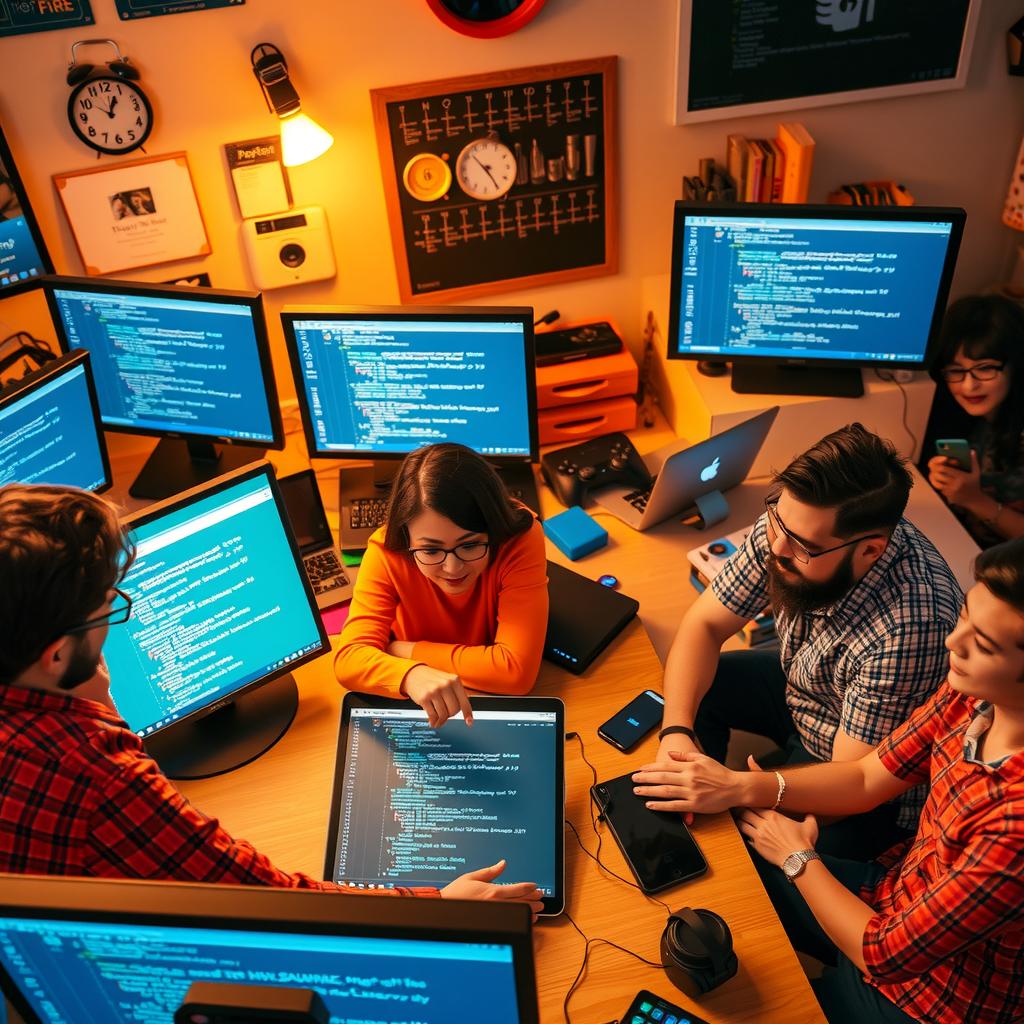In an era where remote teams have become the norm, organizations face a pressing challenge: how to ensure that their code management processes remain secure and effective. As countless developers collaborate across different time zones, the stakes of ensuring robust GitHub security practices have never been higher. With projects often spanning multiple contributors and repositories, the need for a streamlined yet secure workflow is essential not only for protecting sensitive data but also for fostering seamless team collaboration. So, what does it take to set up a secure workflow that caters specifically to the needs of these distributed teams?
The core value of establishing a comprehensive approach lies in understanding that remote work brings unique vulnerabilities alongside its many advantages. Without proper measures in place, issues such as unauthorized access or accidental exposure can lead to significant setbacks in project coordination and version control. By leveraging tools like GitHub effectively, teams can create an environment where secure coding practices are embedded into daily workflows—ensuring that every piece of code pushed is both reliable and protected.
This article will delve into practical strategies aimed at fortifying your team’s use of GitHub, highlighting best practices tailored for remote environments. From implementing role-based access controls to utilizing advanced features like branch protection rules, readers will discover actionable insights designed to enhance their development process while safeguarding their projects against potential threats.
Ultimately, this exploration serves as a guide for leaders aiming to cultivate trust within their remote teams by prioritizing security without compromising efficiency. The integration of solid safety protocols with everyday coding activities on platforms such as GitHub not only bolsters confidence among team members but also promotes innovation through collaborative effort underpinned by strong safeguards.
As we navigate through this discussion on creating a resilient GitHub workflow suited for modern work environments, it becomes clear that embracing these principles is no longer optional; it’s imperative for success in today’s fast-paced digital landscape. Join us as we unpack each element necessary to achieve this goal while enhancing overall productivity and maintaining high standards of security across all projects managed via GitHub.

Key Insights:
-
Establishing Branch Protections: Implementing branch protection rules within GitHub ensures that critical branches are safeguarded against unauthorized changes. This practice is essential for maintaining a secure workflow, as it minimizes the risk of accidental deletions or modifications by team members. By enforcing these protections, remote teams can collaborate more effectively while adhering to secure coding practices.
-
Utilizing Two-Factor Authentication (2FA): Enabling two-factor authentication on GitHub accounts significantly enhances security by adding an extra layer of verification beyond just passwords. For remote teams, this means that even if credentials are compromised, unauthorized access remains challenging. Promoting 2FA adoption fosters a culture of security awareness and strengthens team collaboration through mutual trust in the platform’s integrity.
-
Implementing Access Control Measures: Clearly defined access controls within GitHub’s version control capabilities allow organizations to specify who can view or contribute to projects. This granular approach to code management helps mitigate risks associated with cybersecurity threats while optimizing project coordination among dispersed team members. By managing permissions carefully, remote teams can maintain productivity without compromising on safety measures essential for their workflows.

Understanding the Remote Work Landscape
Navigating the Challenges of GitHub Security in a Distributed Environment
As remote work becomes more prevalent, teams are increasingly relying on platforms like GitHub to facilitate collaboration and manage code effectively. However, this shift to digital coordination introduces unique challenges related to maintaining a secure workflow. One primary concern for remote teams is ensuring that sensitive information remains protected while accessing shared resources from various locations. The complexity of managing permissions and access controls in a virtual environment can create vulnerabilities that cybercriminals may exploit. Therefore, understanding GitHub security is crucial for organizations aiming to safeguard their projects against potential threats.
The significance of implementing robust security measures within GitHub cannot be overstated. With version control at its core, GitHub allows multiple contributors to collaborate seamlessly on coding projects; however, without proper safeguards in place, sensitive data may inadvertently be exposed or compromised. For instance, unsecured repositories can lead to unauthorized access or accidental leaks of proprietary code which could have serious implications for intellectual property rights and project integrity. Thus, establishing secure coding practices becomes paramount for remote teams who rely heavily on this platform.
In addition to safeguarding information through stringent access controls and encrypted communications, fostering an awareness around cybersecurity among team members is essential for effective project coordination using GitHub. Educating developers about the importance of strong passwords and multi-factor authentication helps strengthen defenses against potential breaches while also promoting accountability across the board. Furthermore, integrating tools that continuously monitor repository activity not only enhances transparency but also aids in identifying anomalies that could signal security threats early on.
Moreover, as remote work environments often lack traditional oversight mechanisms found in office settings—such as face-to-face interactions—cultivating a culture centered around vigilance towards secure workflows is vital for distributed teams leveraging GitHub. Encouraging open communication regarding best practices enables team members to share insights into recognizing suspicious activities or adopting new technologies designed explicitly with enhanced security features tailored toward collaborative development efforts.
Ultimately, navigating the complexities surrounding remote teamwork necessitates an unwavering commitment from all stakeholders involved towards prioritizing security. By emphasizing comprehensive training focused on utilizing GItHub’s capabilities, understanding potential risks associated with online collaboration will empower employees at all levels within organizations striving toward excellence while remaining aware of their digital footprint throughout each stage of project execution.

Enhancing Code Integrity Through Effective Practices
Implementing Branch Protections for Secure Development
In an era where remote teams are becoming the norm, ensuring a secure workflow is crucial for maintaining code integrity during collaboration. One of the most effective methods to achieve this is through implementing branch protections in version control systems like GitHub. These protections serve as safeguards against unauthorized changes and help maintain a clean project history. For instance, requiring pull requests before merging into main branches ensures that code reviews take place, allowing team members to scrutinize each other’s contributions thoroughly. This not only enhances overall code quality but also fosters a culture of accountability among developers. Furthermore, administrators can set rules such as mandatory status checks or limiting who can push directly to key branches, thus creating barriers against potential mishaps or malicious activities. By utilizing features offered by GitHub, teams can effectively coordinate projects while adhering to secure coding practices.
The Role of Two-Factor Authentication in Team Collaboration
Another practical strategy for bolstering security within collaborative environments is the implementation of two-factor authentication (2FA). As development workflows increasingly rely on online platforms like GitHub, protecting accounts from unauthorized access becomes paramount. Enabling 2FA adds an essential layer of security by requiring users to verify their identity through something they possess—a smartphone app or hardware token—alongside their password. This diminishes the risk posed by compromised credentials and significantly strengthens overall platform security when engaging with sensitive codebases and project materials. Additionally, organizations should educate their remote teams about recognizing phishing attempts and other security threats that could undermine collaborative efforts on platforms such as GitHub. By prioritizing these measures, teams foster an environment conducive not only to collaboration but also to safeguarding valuable intellectual property.
Best Practices in Code Management
Effective code management extends beyond simply using tools; it requires adopting best practices that prioritize both functionality and security within team operations on platforms like GitHub. Teams should consider adopting consistent naming conventions for branches along with clear commit messages which will aid in maintaining clarity throughout the development lifecycle while facilitating project coordination across diverse contributors regardless of location or time zone differences inherent within remote setups. Moreover, regular audits and updates related to dependencies further enhance project resilience against vulnerabilities present in third-party libraries often found within open-source communities linked via repositories hosted on services like GitHub—thereby closing gaps that attackers might exploit during collaborative sessions.
Continuous Monitoring: Ensuring Ongoing Security Compliance
After establishing robust initial strategies surrounding secure coding practices and collaboration frameworks using tools available from platforms such as GitHub, continuous monitoring remains vital for ensuring compliance over time amidst evolving threat landscapes encountered regularly today by software development entities worldwide striving towards innovation at accelerated paces without compromising safety protocols established earlier down lines throughout product lifecycles leading up toward release stages ahead! Leveraging automated testing solutions integrated directly into pipelines allows stakeholders visibility concerning issues arising due diligence thereby fostering proactive resolution approaches rather than reactive ones after breaches occur – ultimately cultivating stronger partnerships between developers entrusted with crafting tomorrow’s technologies responsibly together moving forward collaboratively!
Training Programs: Building a Culture of Security Awareness
To cement these strategies effectively across all levels involved—from junior developers participating actively alongside experienced architects guiding them—the implementation of training programs focusing specifically around Git-based functionalities alongside broader cybersecurity concepts would prove extremely beneficial long-term investments yielding dividends regarding heightened awareness surrounding risks associated alongside various facets pertaining especially relevant contexts involving secure workflow, emphasizing compliant usage patterns observed consistently enabling successful outcomes achieved collectively whilst simultaneously reinforcing trust amongst collaborators embarking upon shared endeavors via rich ecosystems powered primarily through collaborative innovation frameworks enabled largely thanks largely due technological advancements witnessed today courtesy modern-day tools including those offered graciously provided generously courtesy Git-centric infrastructures empowering creators everywhere united under common goals pursued passionately together onward!
Cultivating a Security-First Culture
Fostering Trust Through Enhanced Security Measures
In today’s digital landscape, cultivating a security-first culture is essential for any organization aiming to boost productivity and enhance stakeholder trust. By prioritizing secure coding practices and implementing robust guidelines, teams can create an environment where members feel confident in their contributions. This cultural shift not only encourages open communication but also strengthens team collaboration across remote teams. Utilizing platforms like GitHub fosters seamless code management and effective version control, ensuring that all stakeholders are on the same page regarding project coordination and security protocols. As organizations embrace these tools, they empower their workforce to prioritize safety without sacrificing efficiency, creating a harmonious balance between innovation and protection.
The Role of Leadership in Promoting Security
Leading by Example: Setting the Standard for Security Practices
Leadership plays a pivotal role in establishing a security-first culture within an organization. Leaders must actively champion the importance of GitHub’s features that support secure workflows while demonstrating commitment through consistent application of best practices themselves. When leaders engage with their teams about potential vulnerabilities or risks associated with project development, it promotes transparency and builds confidence among stakeholders in project outcomes. Moreover, regular training sessions on using GitHub effectively can equip employees with necessary skills to manage code securely while encouraging them to adopt proactive measures against potential threats. This approach reinforces the message that security is a shared responsibility—one that enhances both individual accountability and collective success.
Enhancing Team Productivity Through Secure Collaboration
Building Efficiency Without Compromising Safety
Integrating enhanced security measures into everyday operations significantly impacts team productivity positively when combined with tools like GitHub for effective code management. By fostering an atmosphere where team members are encouraged to communicate openly about potential security issues, organizations can prevent bottlenecks caused by oversight or negligence regarding safe coding practices. Furthermore, leveraging GitHub‘s built-in features allows remote teams to collaborate effortlessly while adhering to stringent security standards; this ensures everyone understands how changes impact overall system integrity during different stages of project development. Such structured yet flexible methods help maintain momentum toward achieving goals without compromising safety—a key factor in building lasting trust among stakeholders.
Continuous Improvement: Adapting to Evolving Threats
Staying One Step Ahead: Embracing Change for Future Success
As cyber threats evolve swiftly alongside technological advancements, organizations must commit themselves continually towards improving their secure workflow strategies within platforms like GitHub—a vital aspect of maintaining relevance amidst competition today! Regularly assessing existing policies helps identify gaps where improvements are needed while keeping everyone informed about emerging trends affecting cybersecurity landscapes globally—their vigilance contributes immensely toward bolstering resilience against attacks! Additionally investing time into staying updated on new functionalities offered by GitHub will ensure robust mechanisms remain operational throughout various projects undertaken over time thus solidifying long-term relationships built upon mutual trust between all involved parties as well as ensuring successful outcomes consistently achieved throughout collaborative endeavors undertaken together moving forward!
Frequently Asked Questions:
Q: What are the key components of a secure workflow for remote teams using GitHub?
A: A secure workflow involves several critical elements including setting up branch protections to prevent unauthorized changes, implementing two-factor authentication to enhance account security, and establishing access controls that ensure only authorized personnel can interact with sensitive code. By integrating these practices within their GitHub usage, remote teams can significantly reduce vulnerabilities while promoting effective collaboration.
Q: How does GitHub support effective team collaboration in a distributed work environment?
A: GitHub’s version control capabilities empower remote teams by allowing them to track changes made to the codebase efficiently. Features like pull requests and code reviews encourage peer feedback and collaborative problem-solving. By leveraging these tools within the platform, organizations can streamline project coordination while maintaining secure coding practices essential for safeguarding their projects against potential risks.
Q: Why is fostering a culture around security important for remote development teams?
A: Instilling a culture of security enhances productivity among remote teams as it encourages members to prioritize safe coding habits and remain vigilant against cybersecurity threats. When stakeholders recognize that an organization values GitHub security, they gain confidence in the project’s integrity and outcomes. This cultural shift not only mitigates risks associated with distributed workflows but also fosters innovation without compromising on safety or efficiency.
